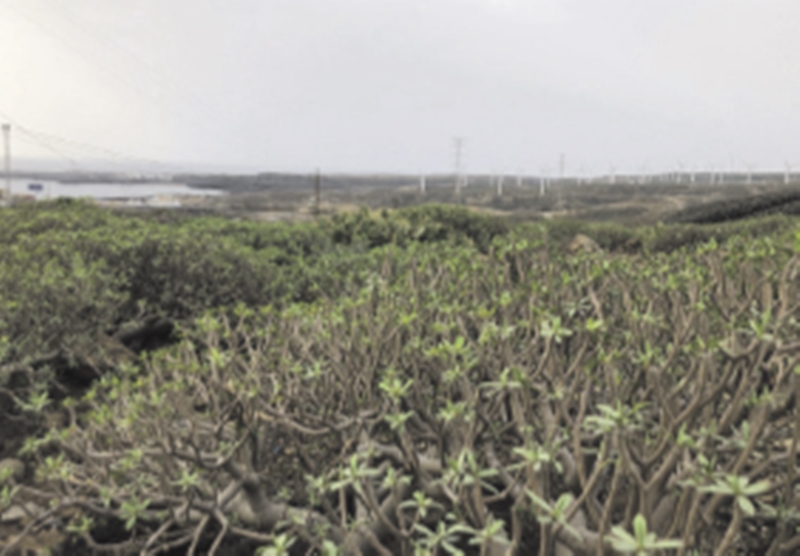
The results of the latest rains in the South can already be seen in the landscape, which has changed its usual aridity for the green of the flowering spurges and vegetation that once again confirms how grateful the land is in the southern region. The counterpoint has been provided in recent times by the haze, with one of the longest lasting episodes remembered in recent years.
The long dry stretches so characteristic of this area of the Island have disappeared after the last storm passed, although the rainfall recorded is far from the stormy phenomenon at the beginning of last year due to the tail blows of the Filomena storm, which covered the center of the peninsula with snow .
That stormy front entered with a southwesterly wind to later change to a northwesterly one, which allowed the entire island to be irrigated. Teide white. At the Grafcan station in La Escalona (Vilaflor) 280 liters per square meter were collected in three days, and the meters of the Cabildo in Granadilla, San Miguel and Guía de Isora recorded up to 500 liters between January 4 and 11 of 2020.
They are not, by any means, the amounts that have been collected in recent times, but the falling water, which flooded some garages in El Palm-Mar two weeks ago after the rapid formation of a stormy phenomenon, has been received with joy for farmers and ranchers in full harvest of the great planting of potatoes in the Canary Islands, which began in November and will end this month, and whose harvest will take place from April to early July.
But if the face is the rain, the cross has been the haze. The southern weather has enveloped the Islands in an intense cloud of dust in suspension from the Sahara, which has harmed potato plantations, vineyards and fruit trees, a circumstance that, together with temperatures above normal at this time of the year, shortens irrigation times. The men and women of the countryside also do not hide their disappointment at the failed weather forecasts of 10 days ago in which up to 15 liters per square meter were announced in one hour. But the disturbance changed its trajectory and avoided the Archipelago.
While the tourist South celebrates the return to stability and sunny days, the region’s countryside continues to look to the sky, trusting that winter, which has more than a calendar month left, has not lowered the blind and placed the closed for vacation sign
















